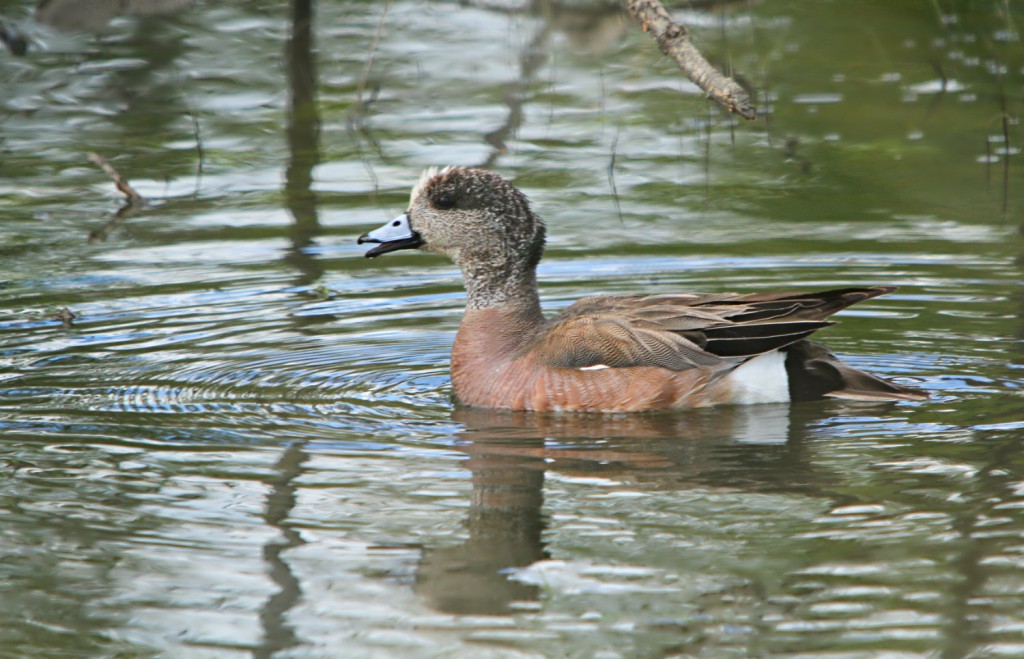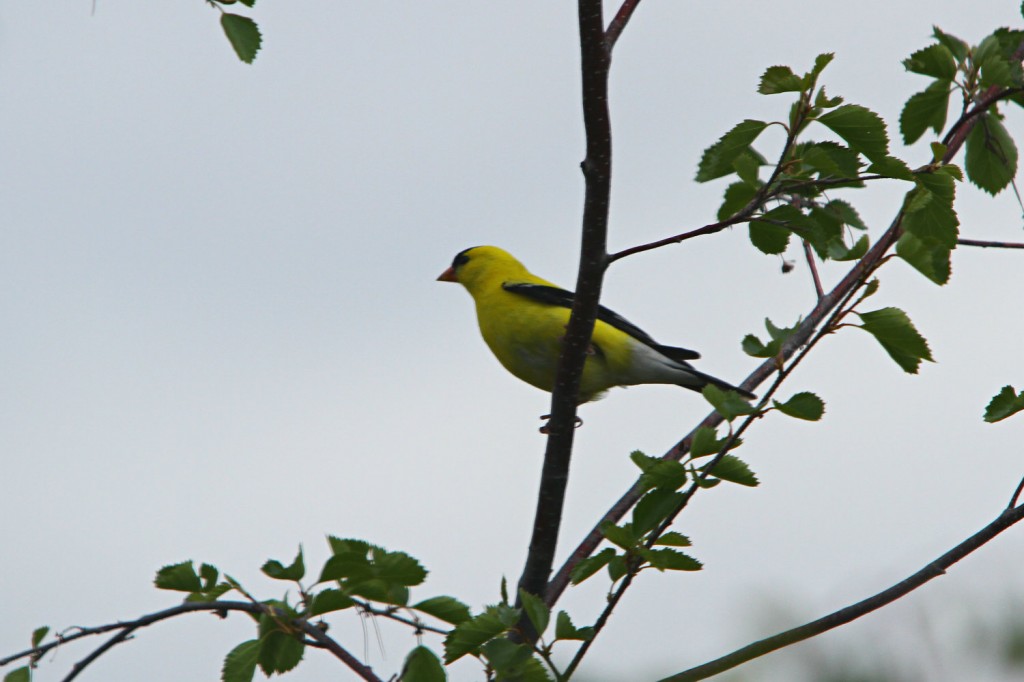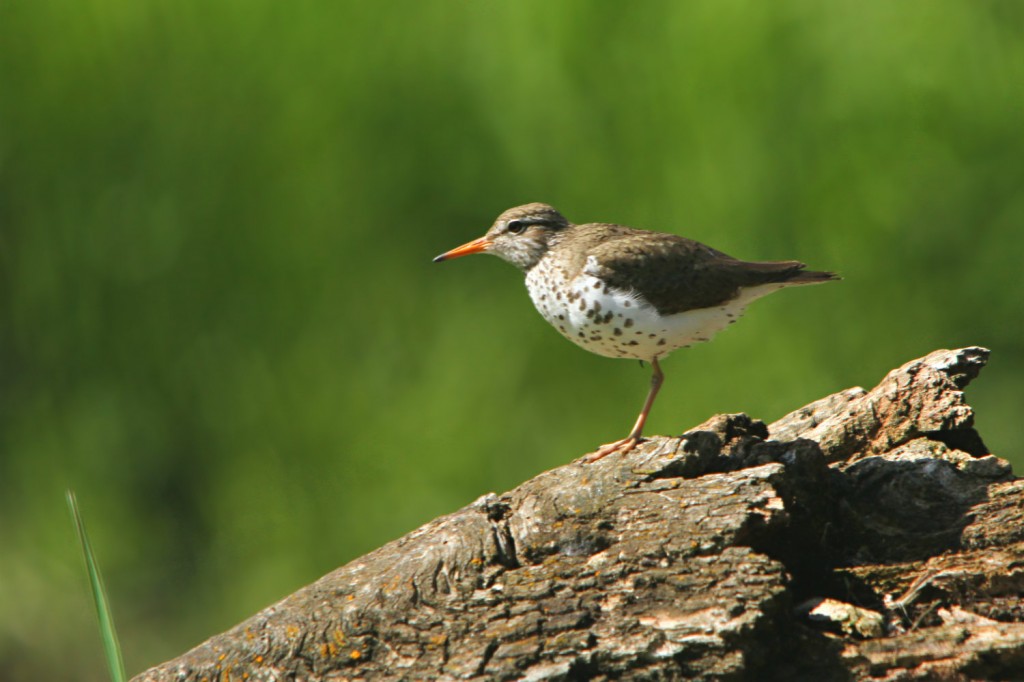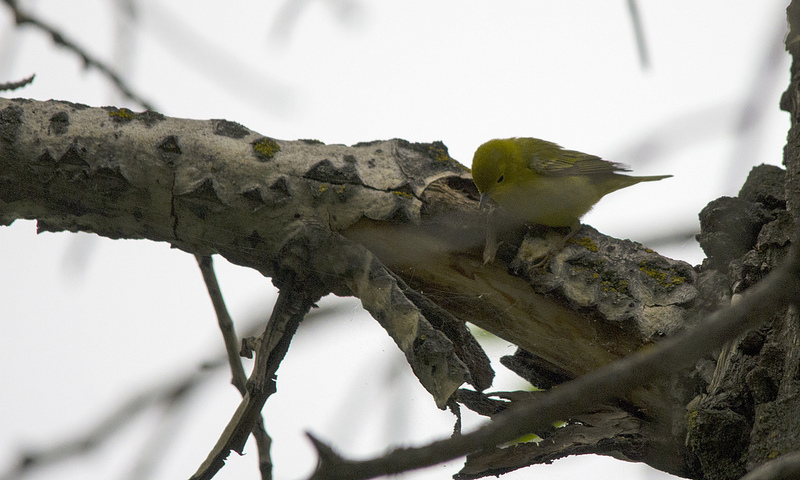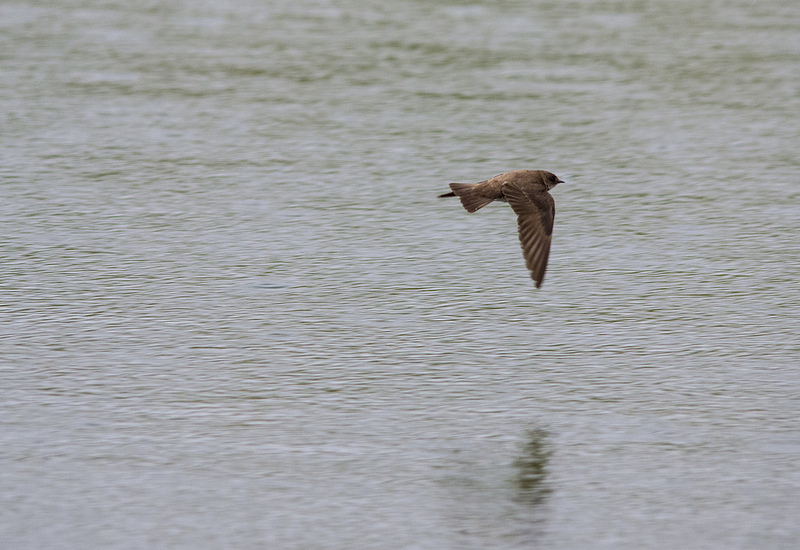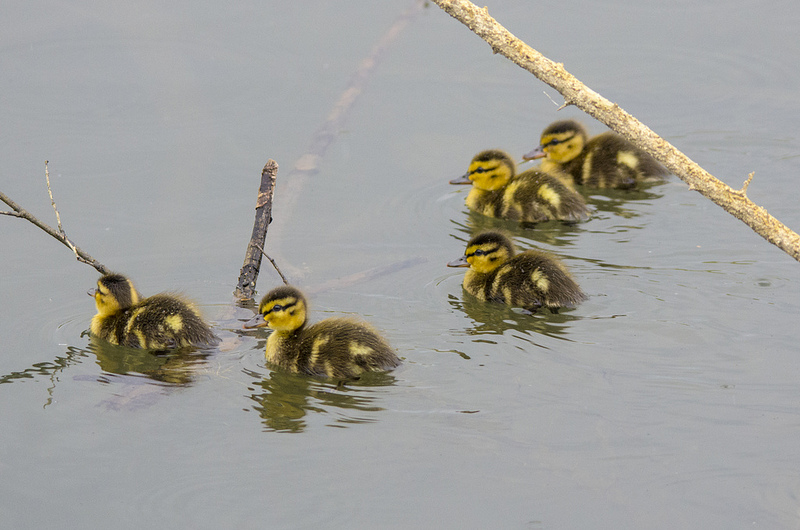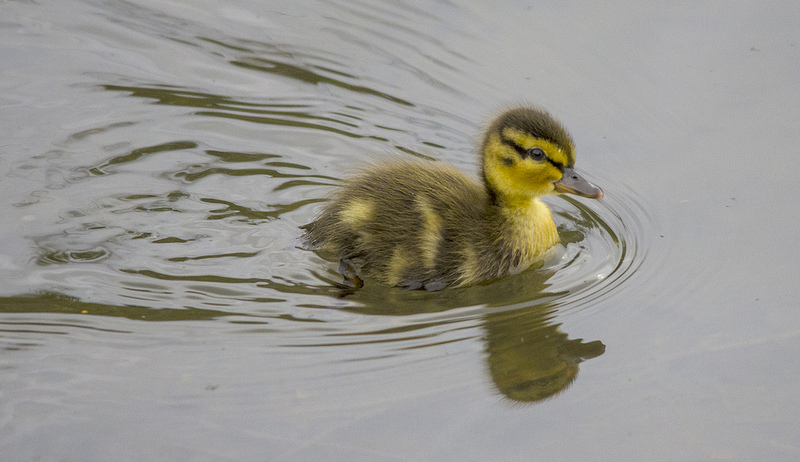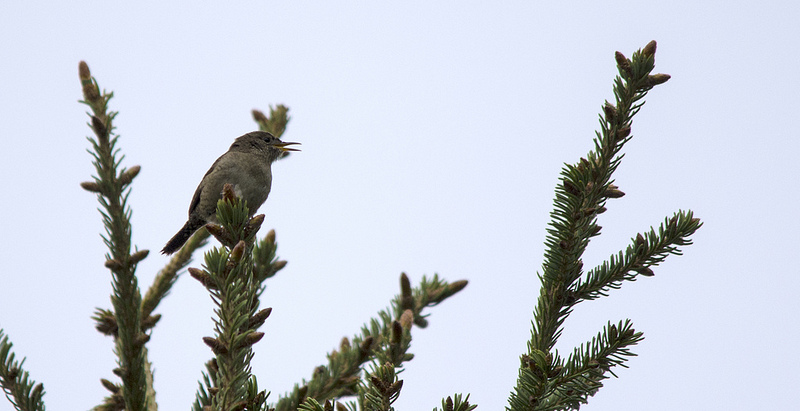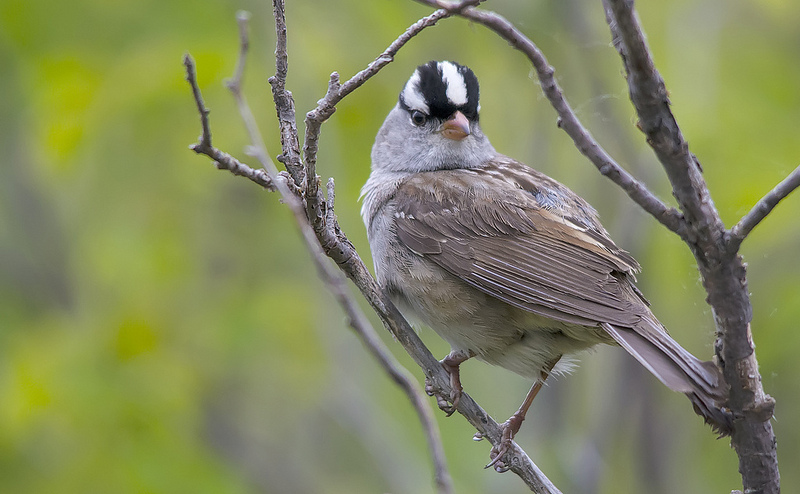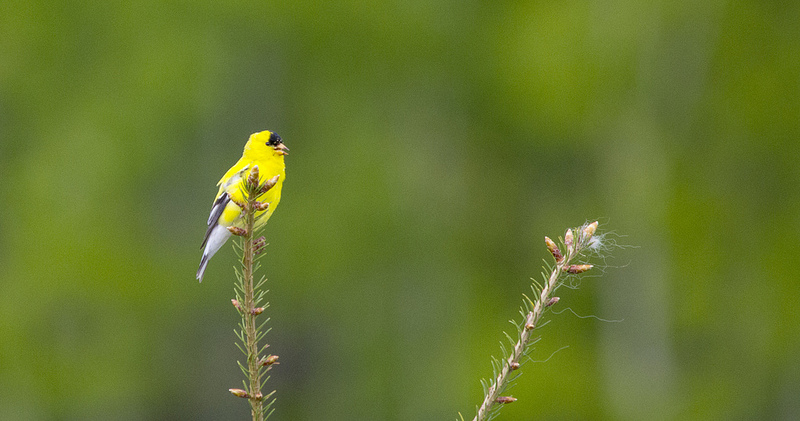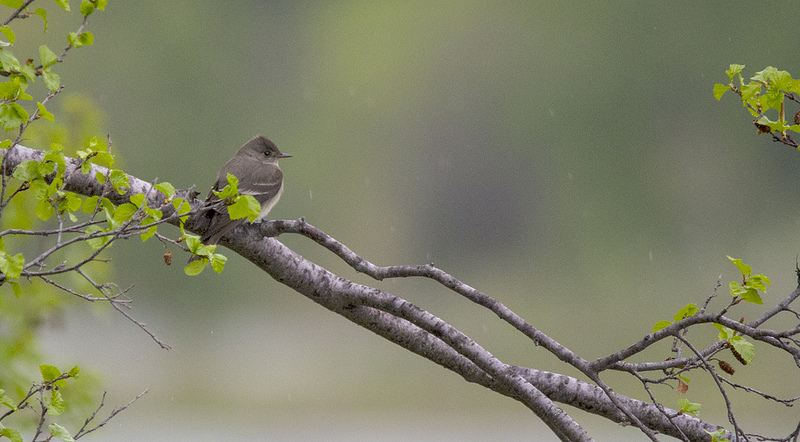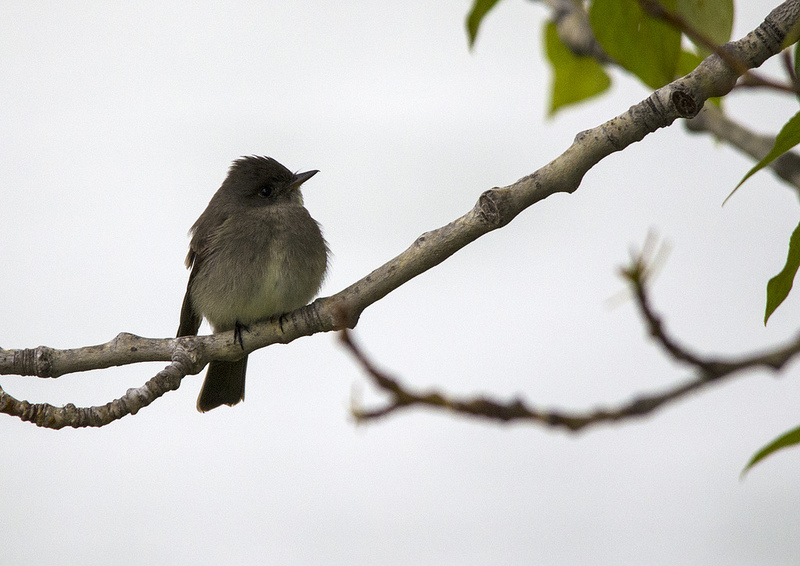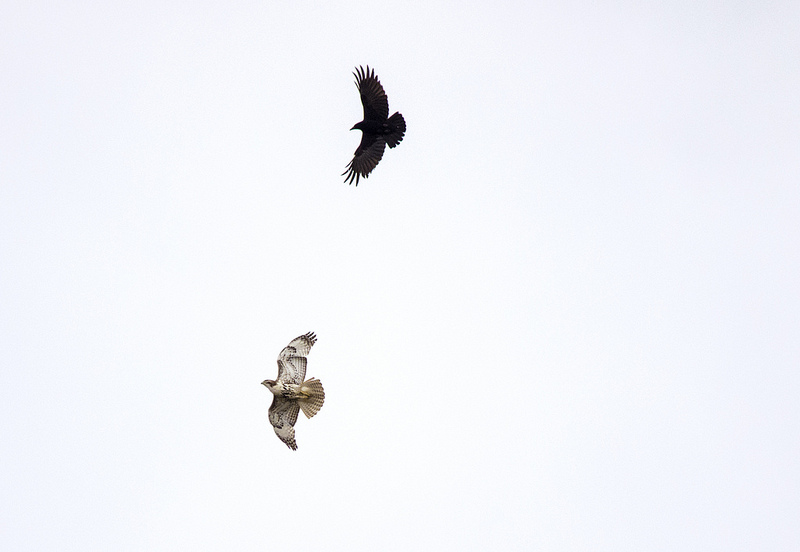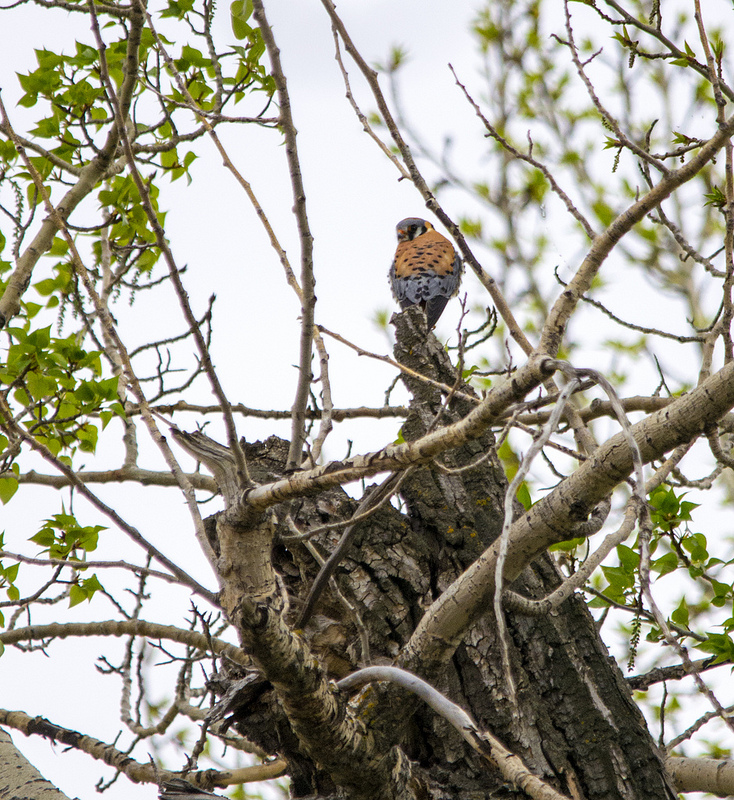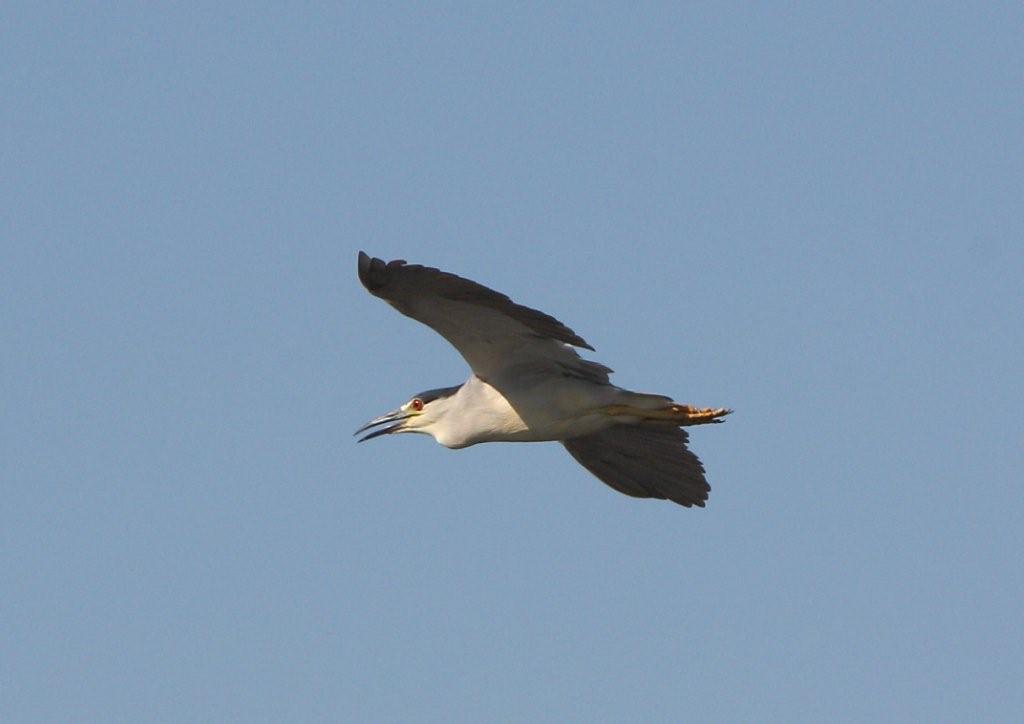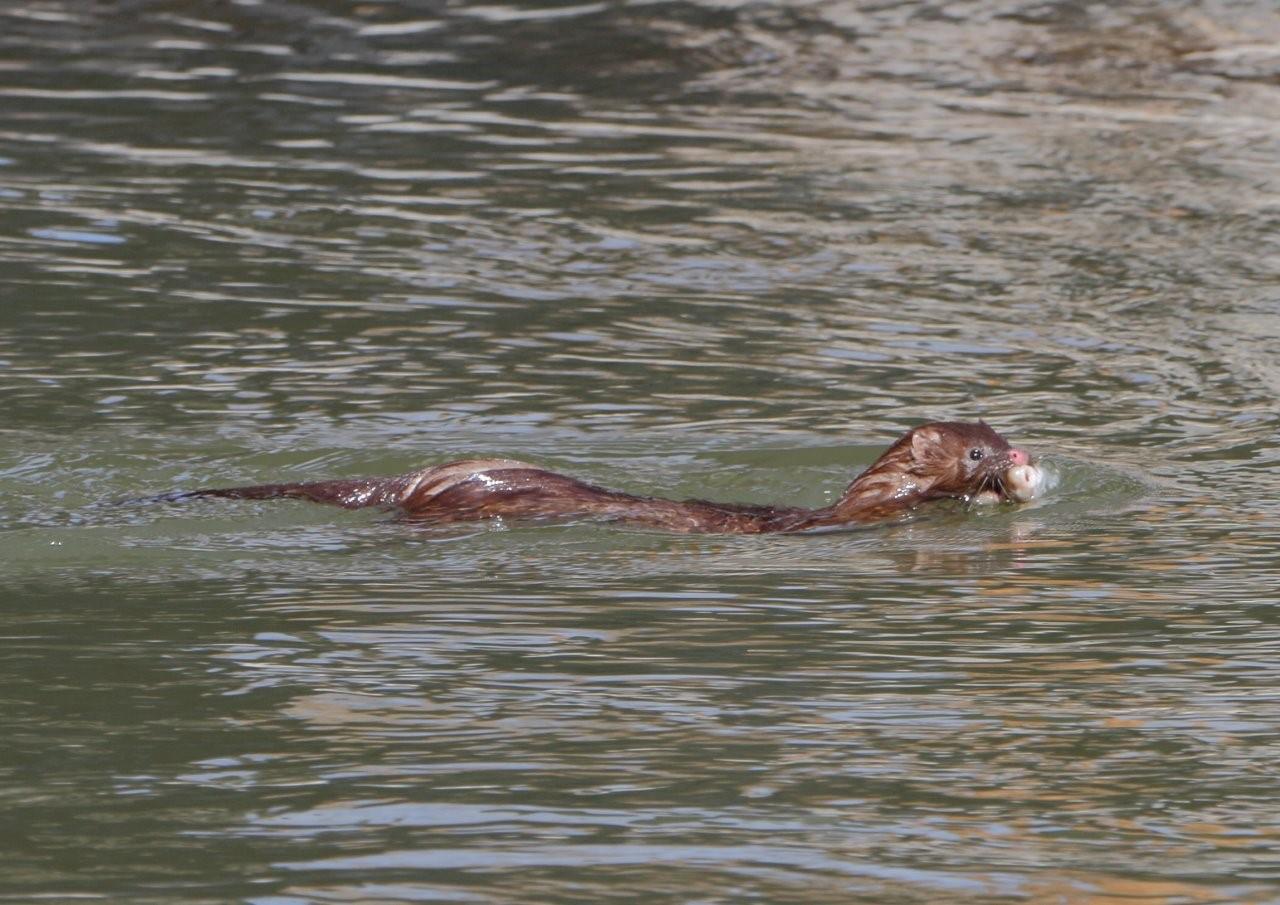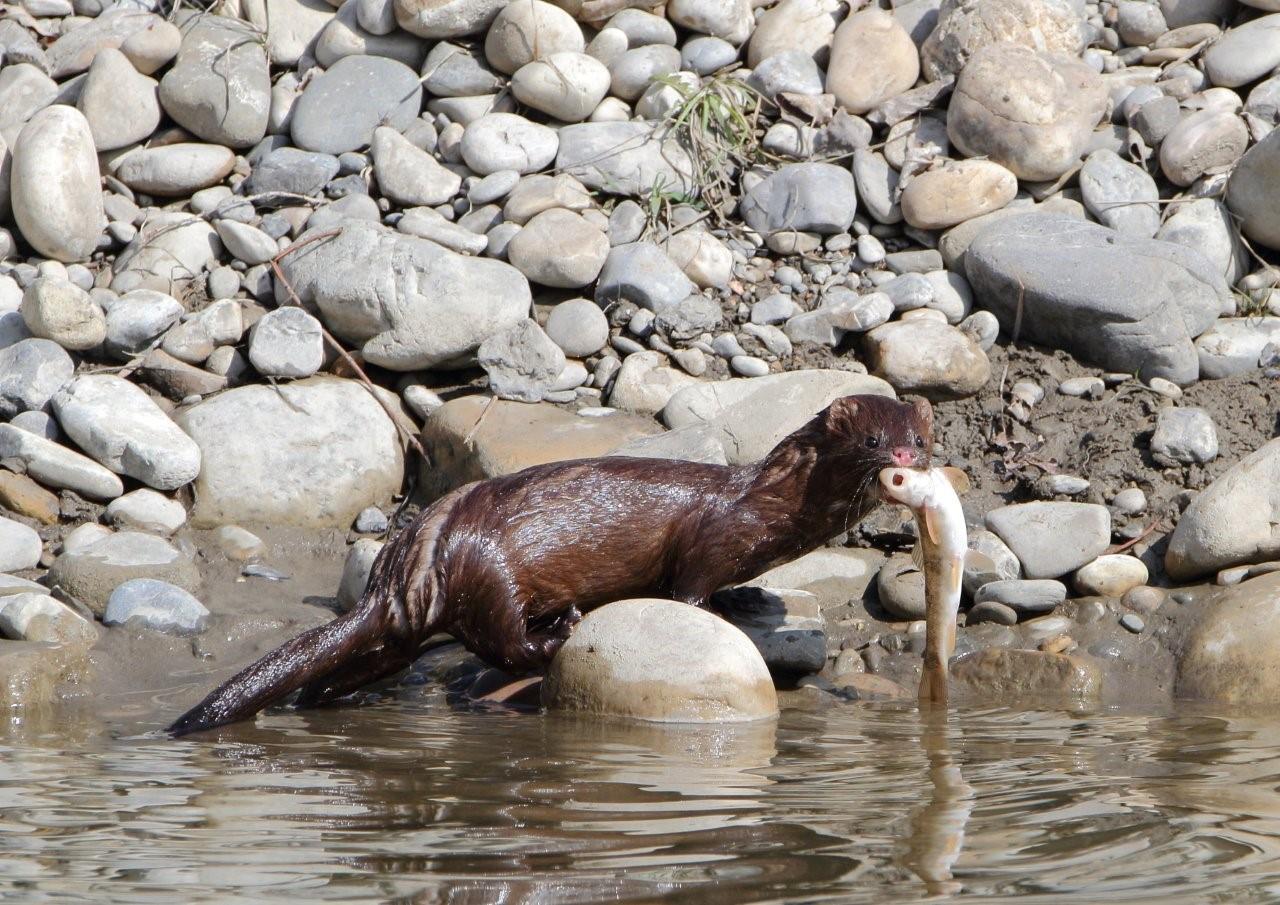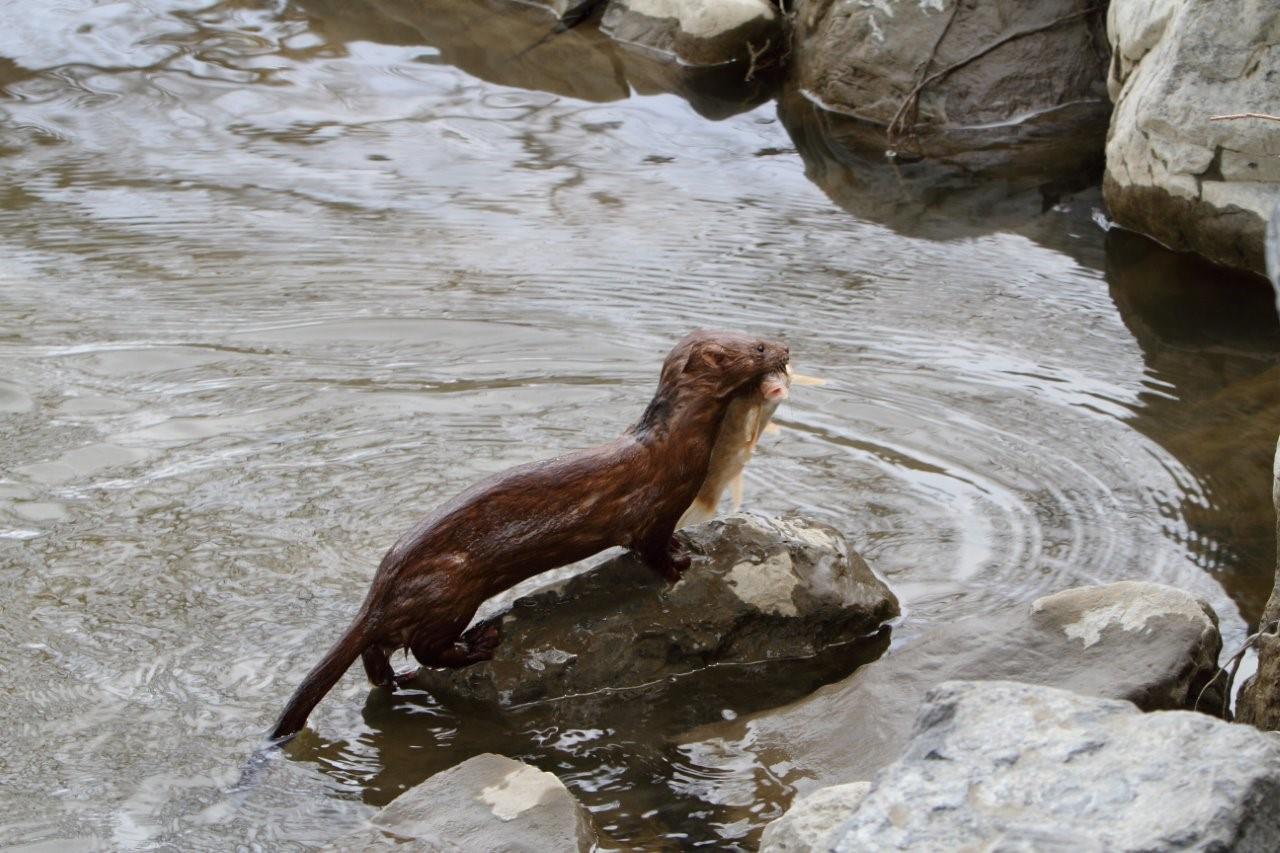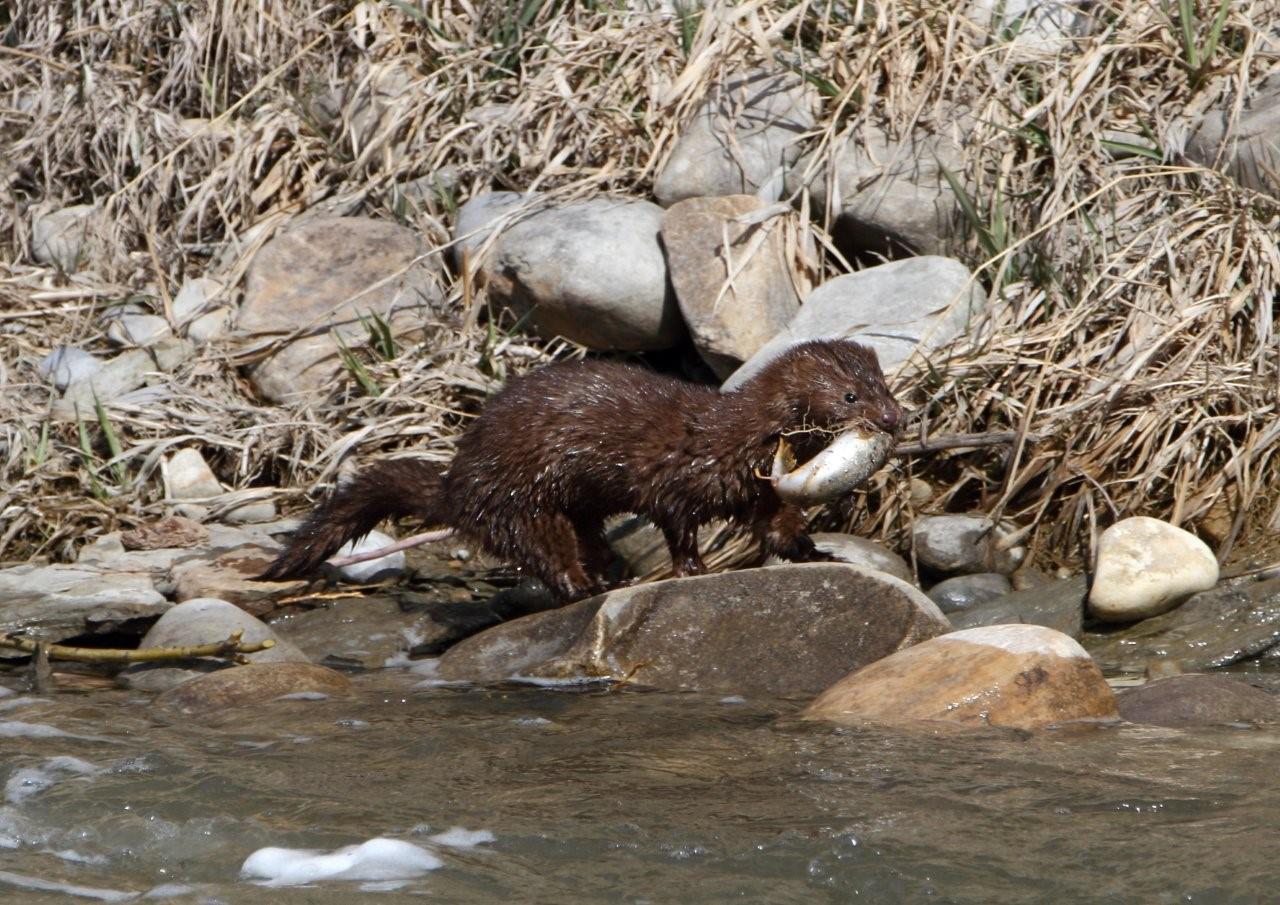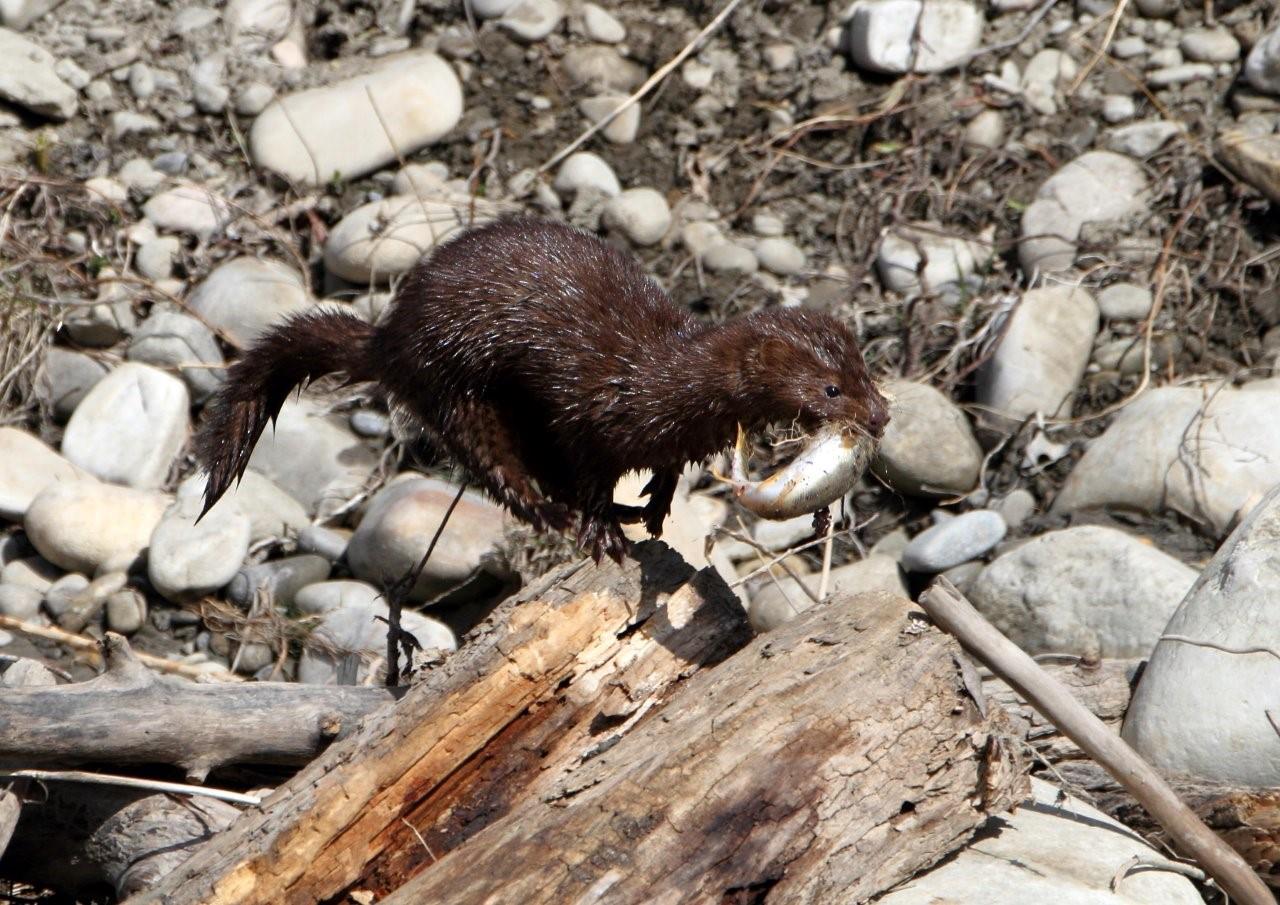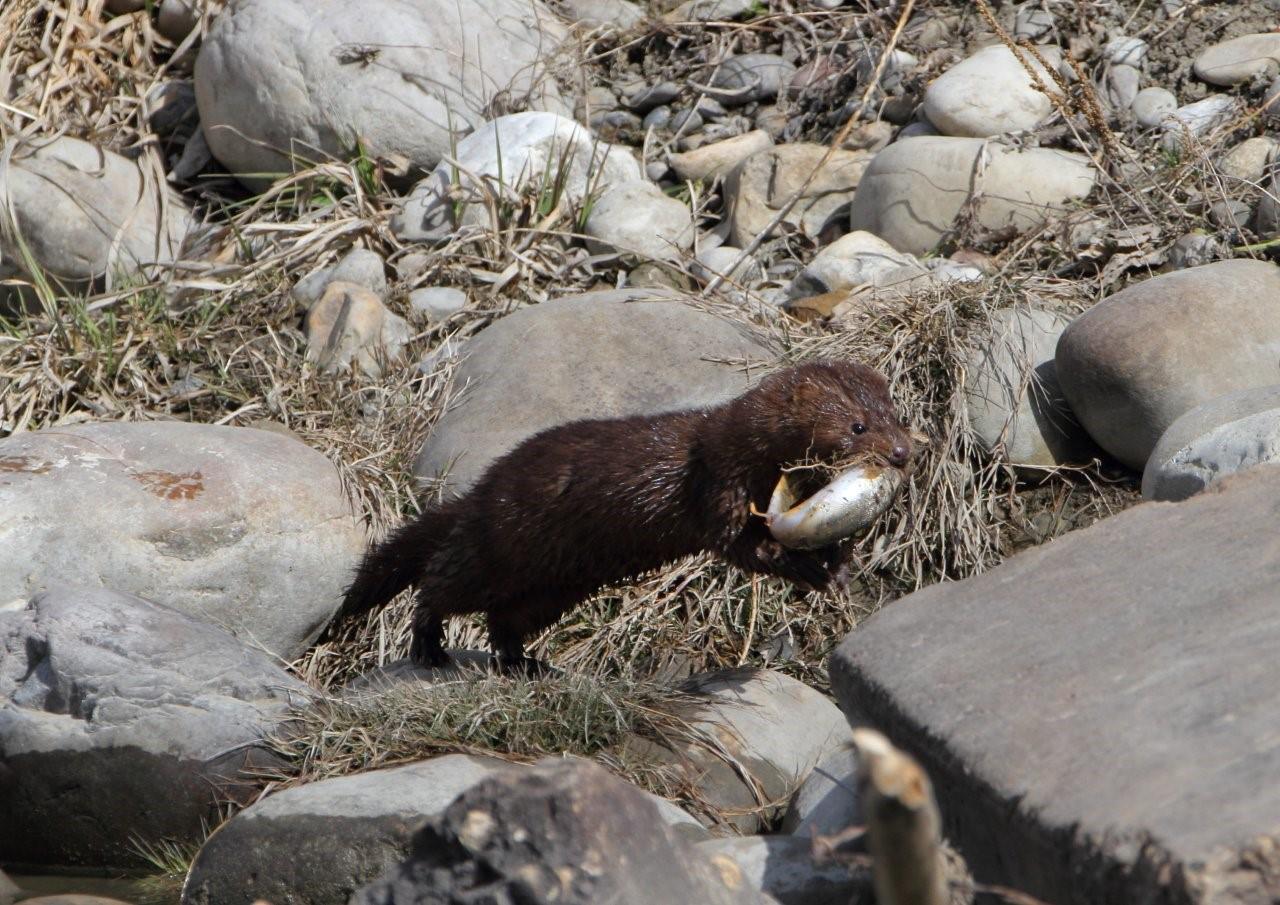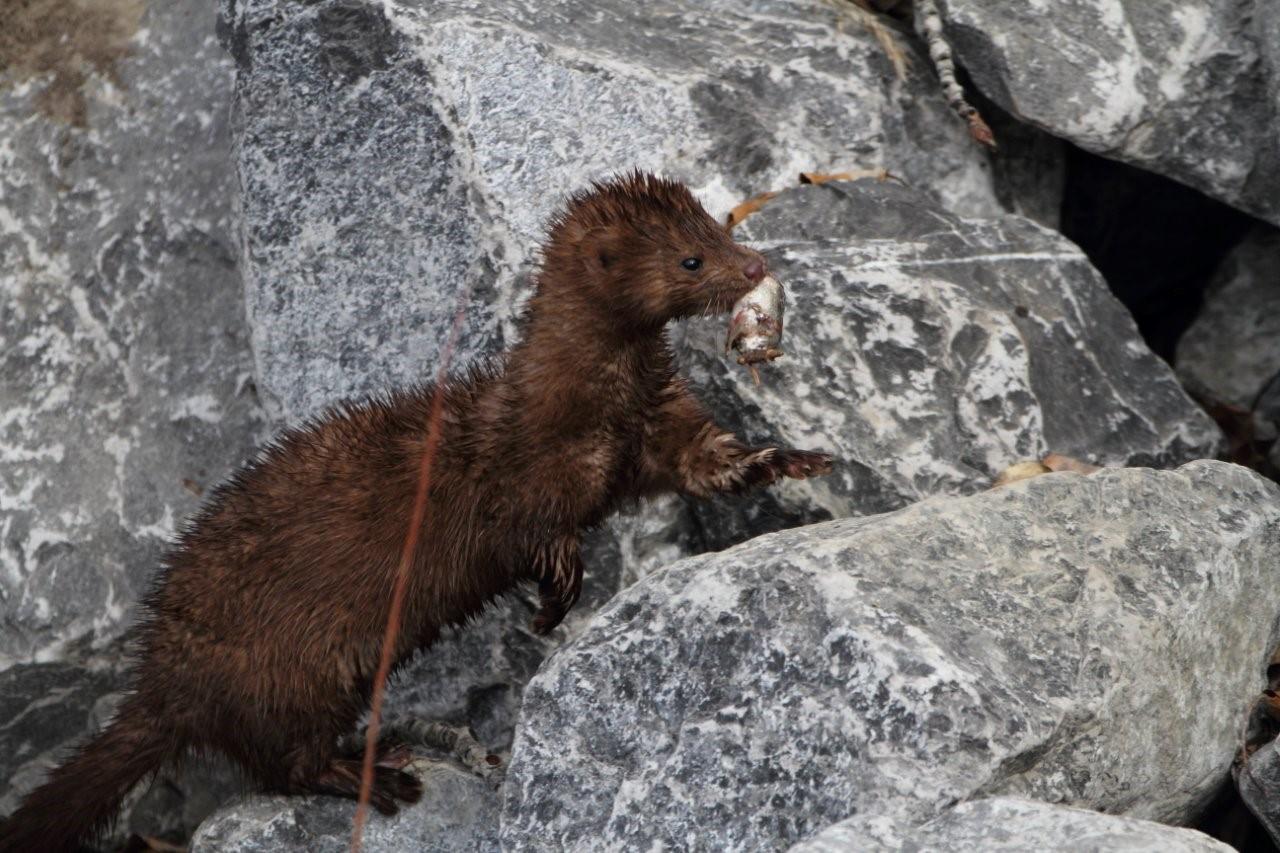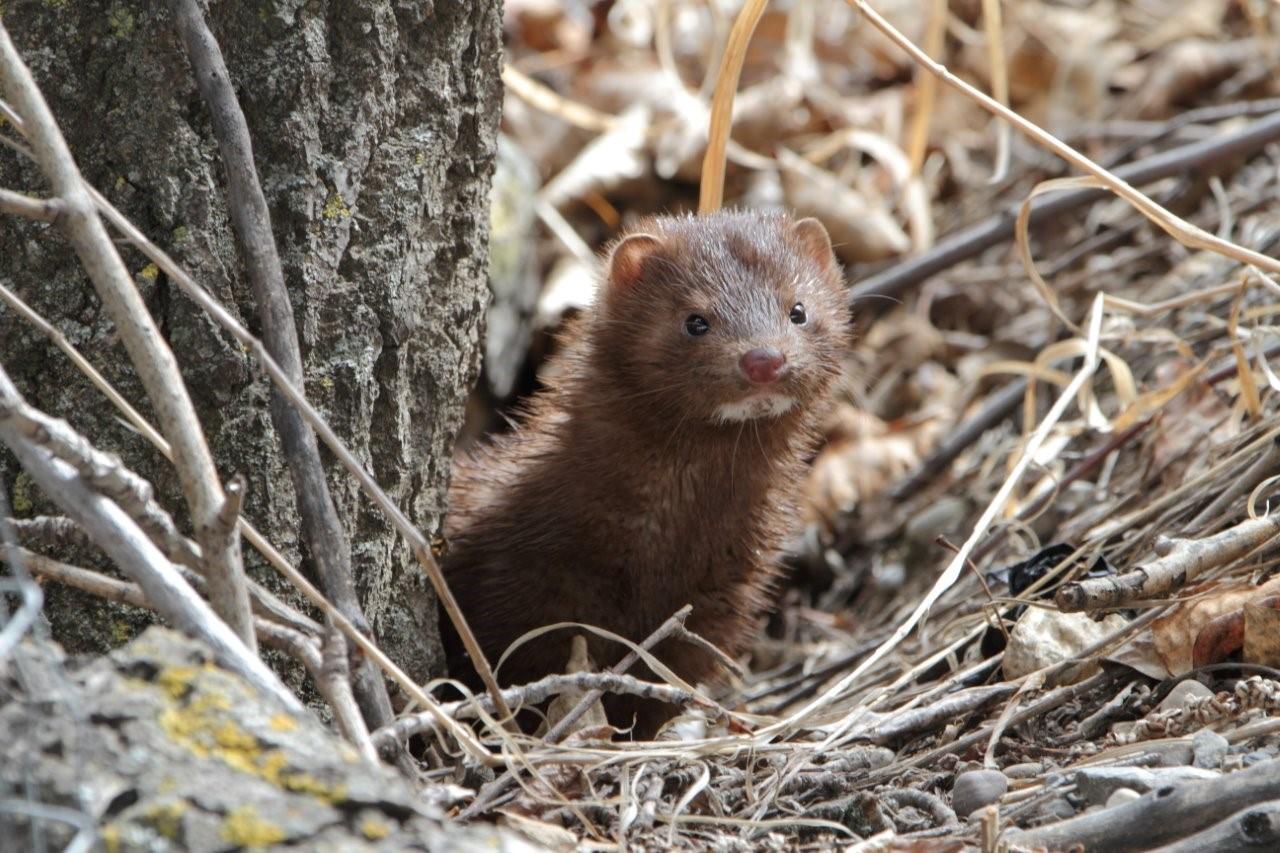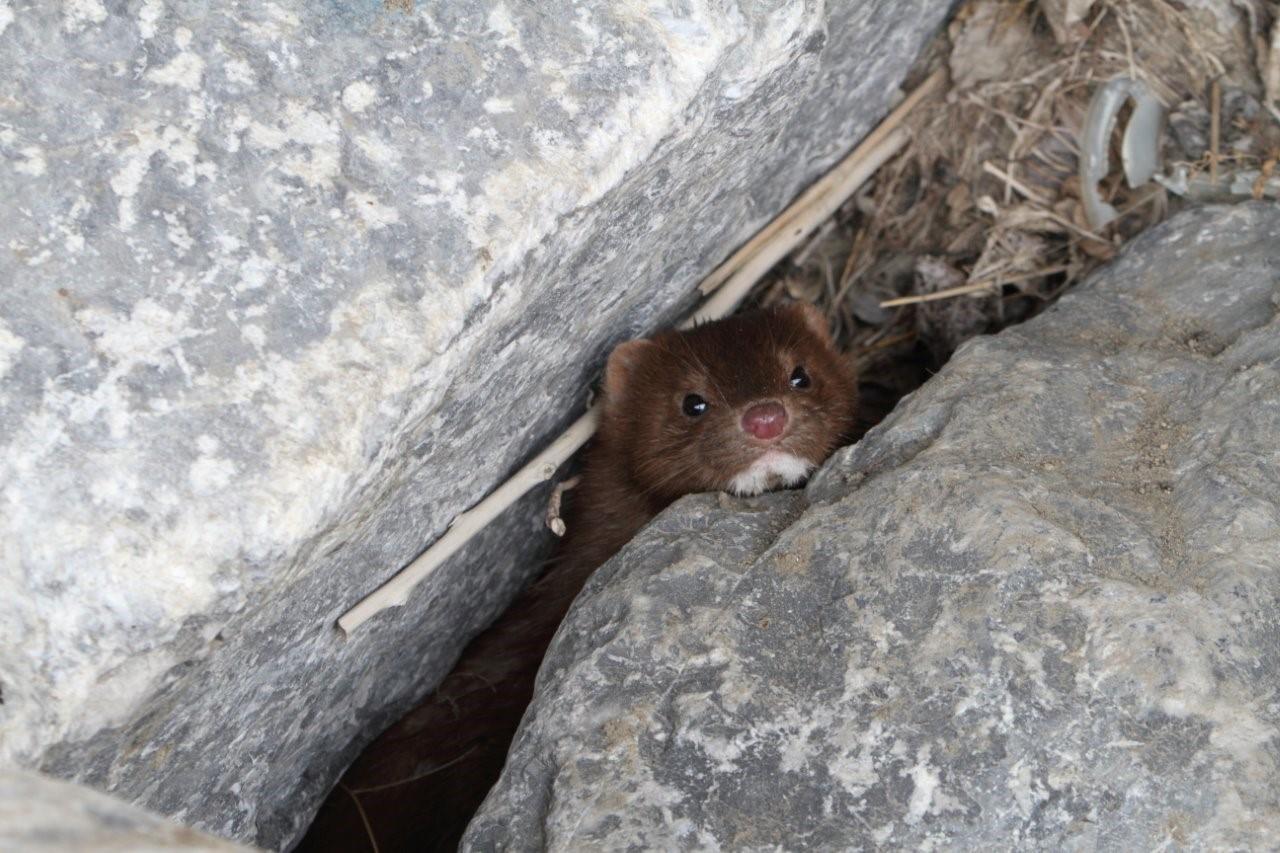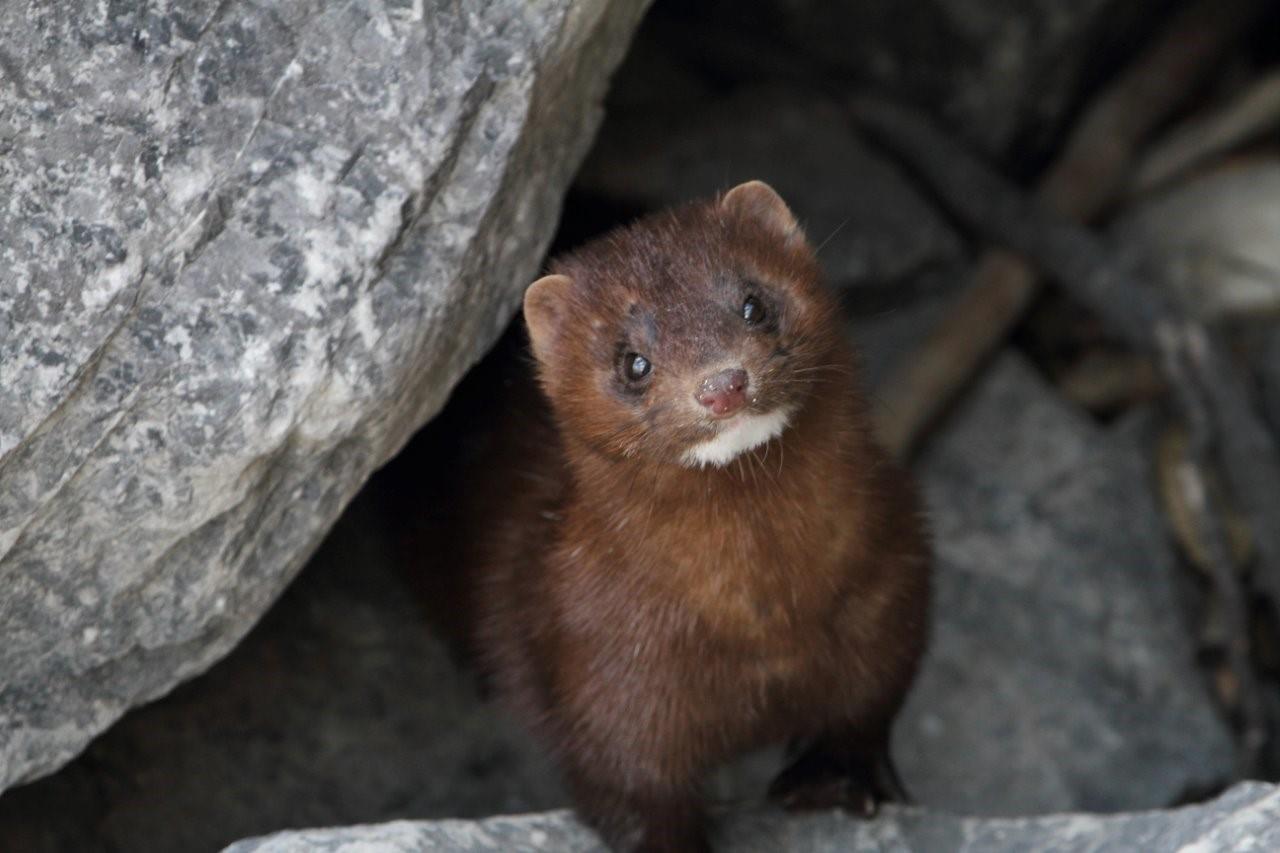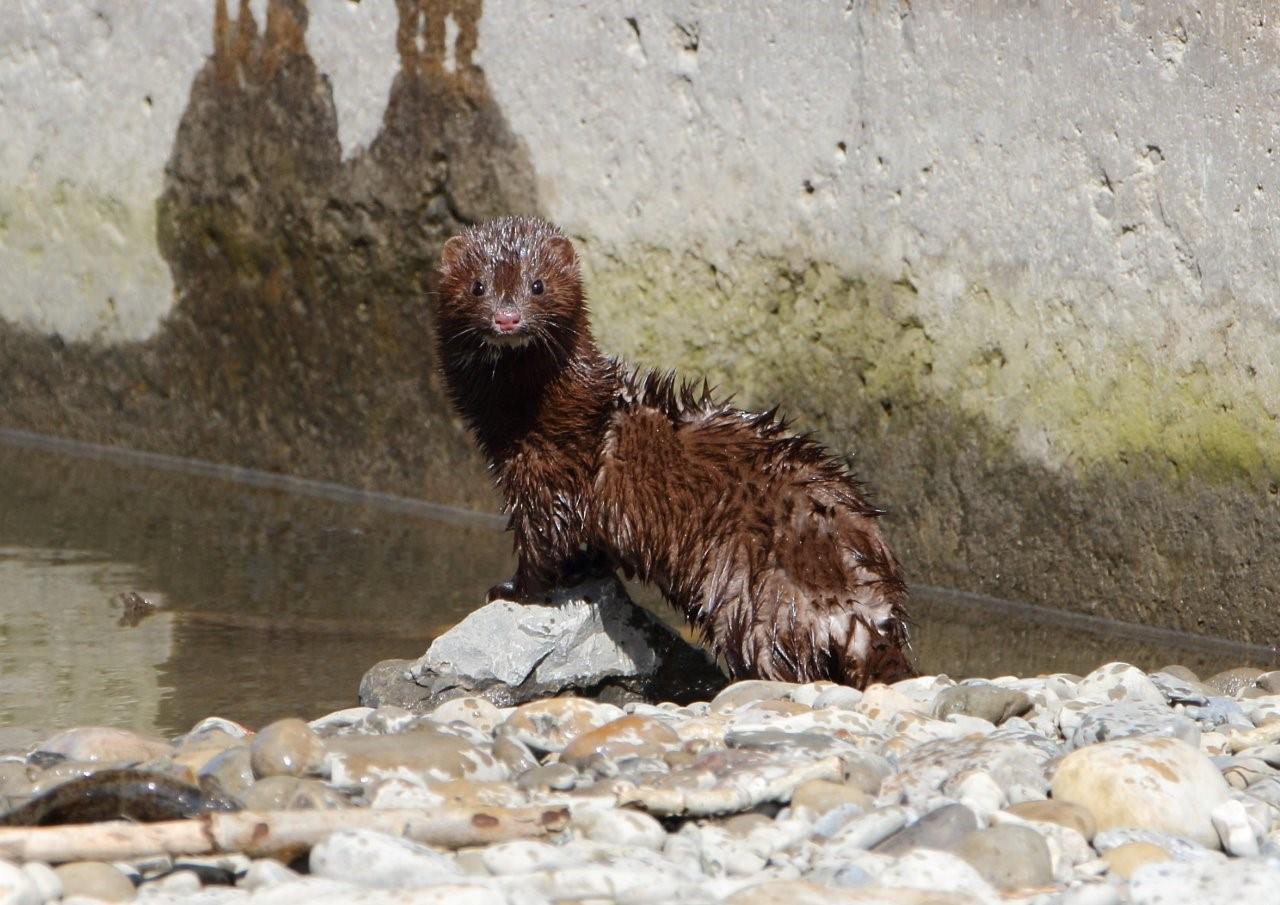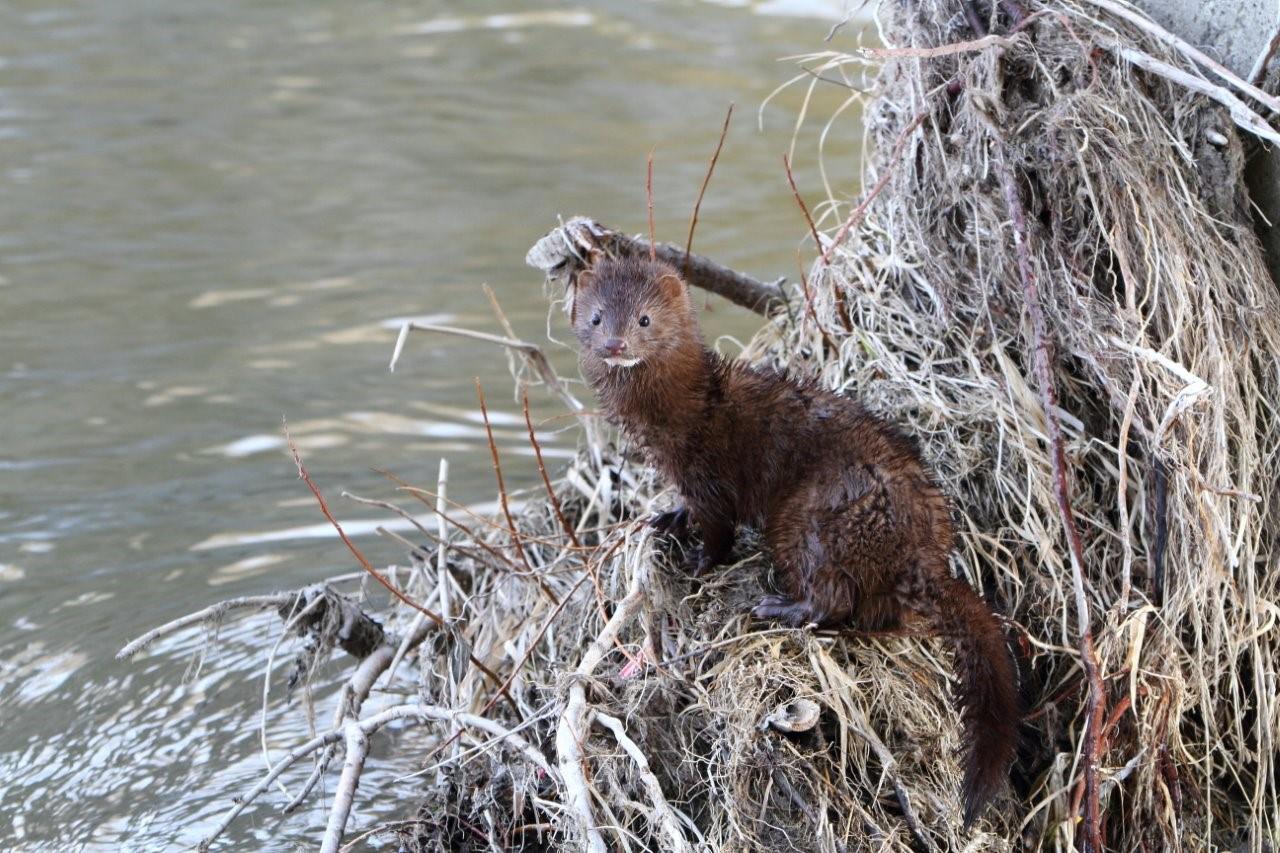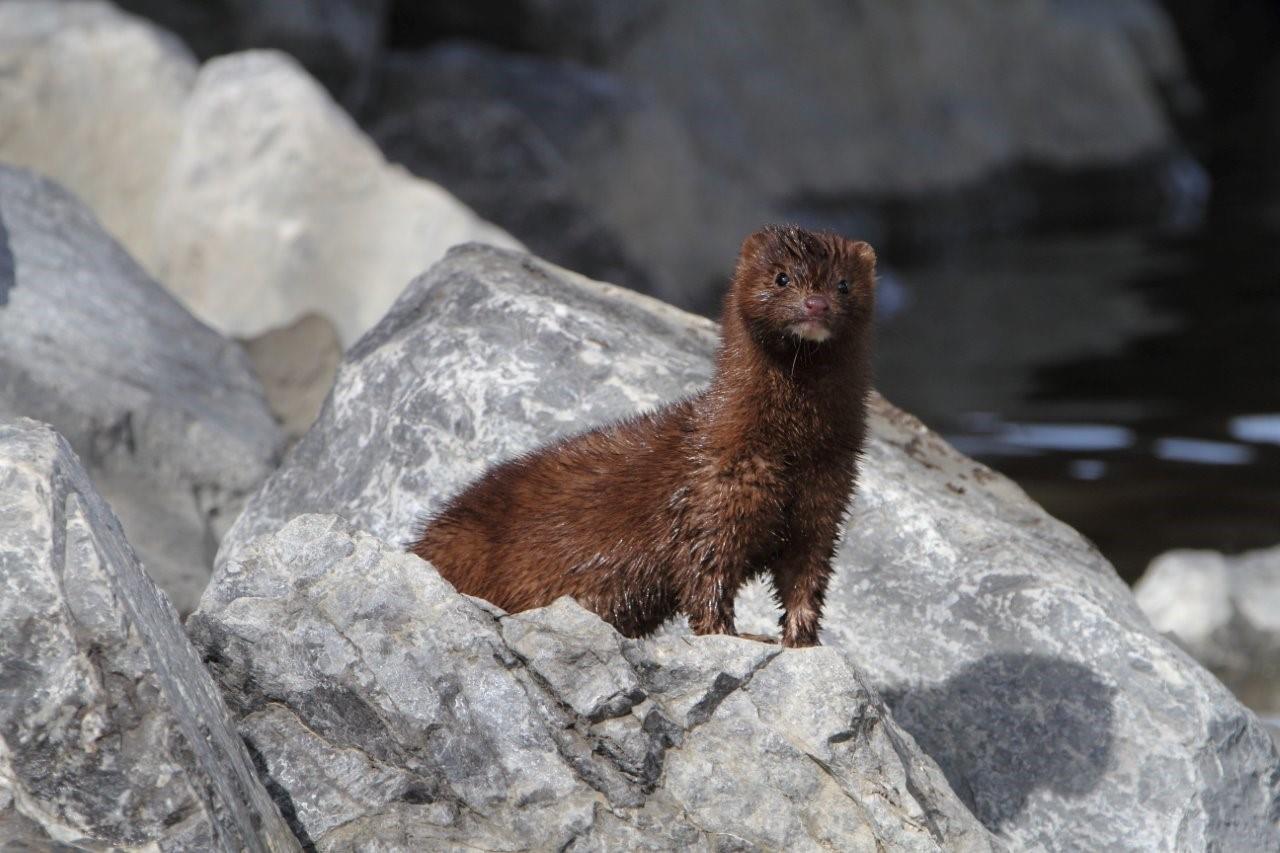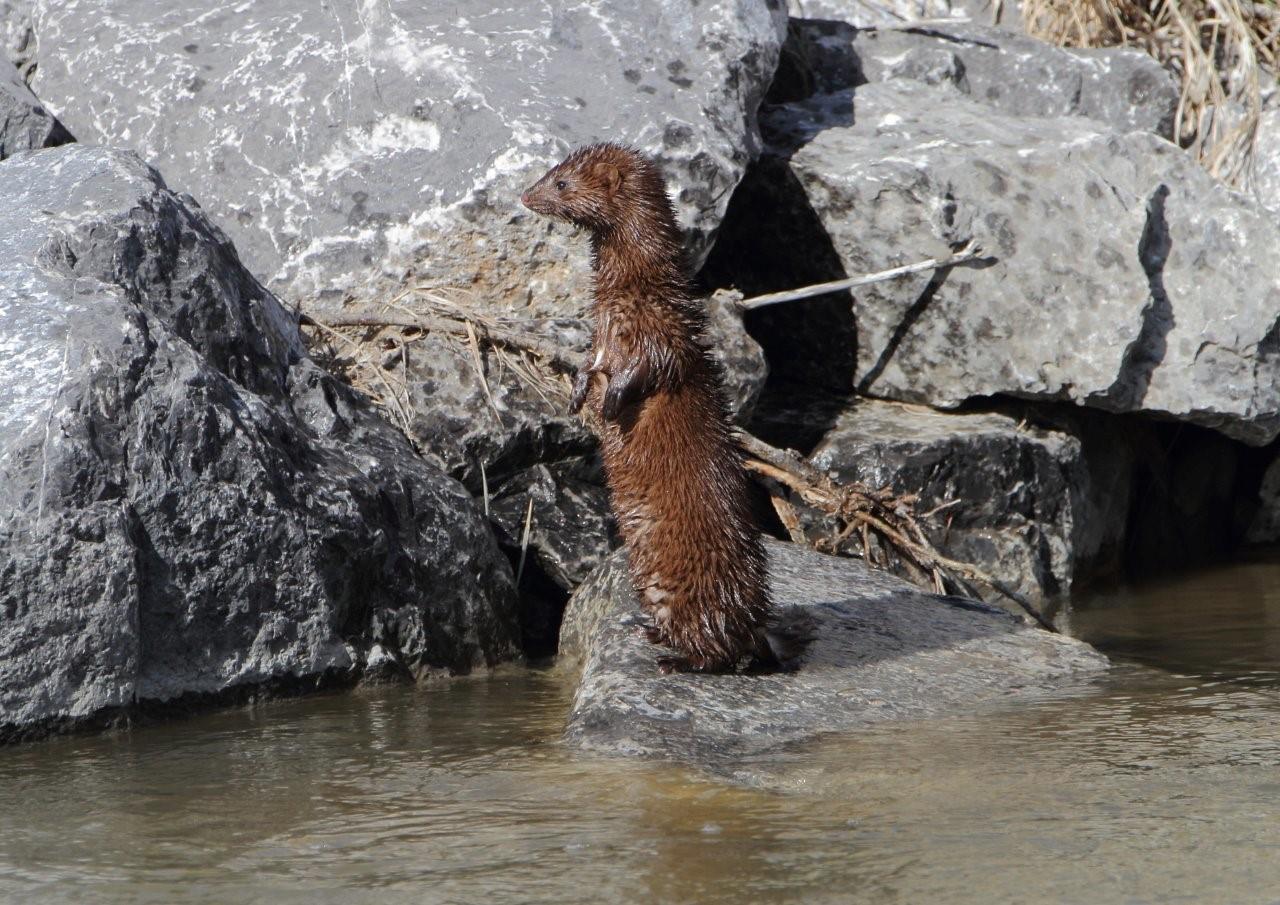Tony LePrieur sent in these great shots from June 8th, taken at Inglewood Bird Sanctuary and Fish Creek Park, between Shannon Terrace and Bebo Grove.
Archives
Fish Creek Big Day
Posted by Matthew Sim
So how many species of birds can you find in a single day in Fish Creek P.P.? Last year, I set out to find the answer. I turned up 93 species, 7 short of my goal of 100. This year, I was back out again, trying my luck once more. Once again though, I fell short, managing to find a total of 89 species for the day.
I won’t write up too much here or I could have several pages of notes but I will point out some of the highlights, and of course, low points. Surprising this year was the lack of quite a few species that should have been easy to find. Notably, Osprey, Belted Kingfisher, Ruddy Duck, Tennessee Warbler, Forster’s Tern, Black Tern and Pied-billed Grebe were missing. Some of these were absent due to the (until quite recently), low water levels at the Lafarge Meadows sloughs. I had wondered why there were few birds at the sloughs and Dan helped me out by pointing out the fact that the sloughs had been quite low for the last few weeks, perhaps turning away some species.
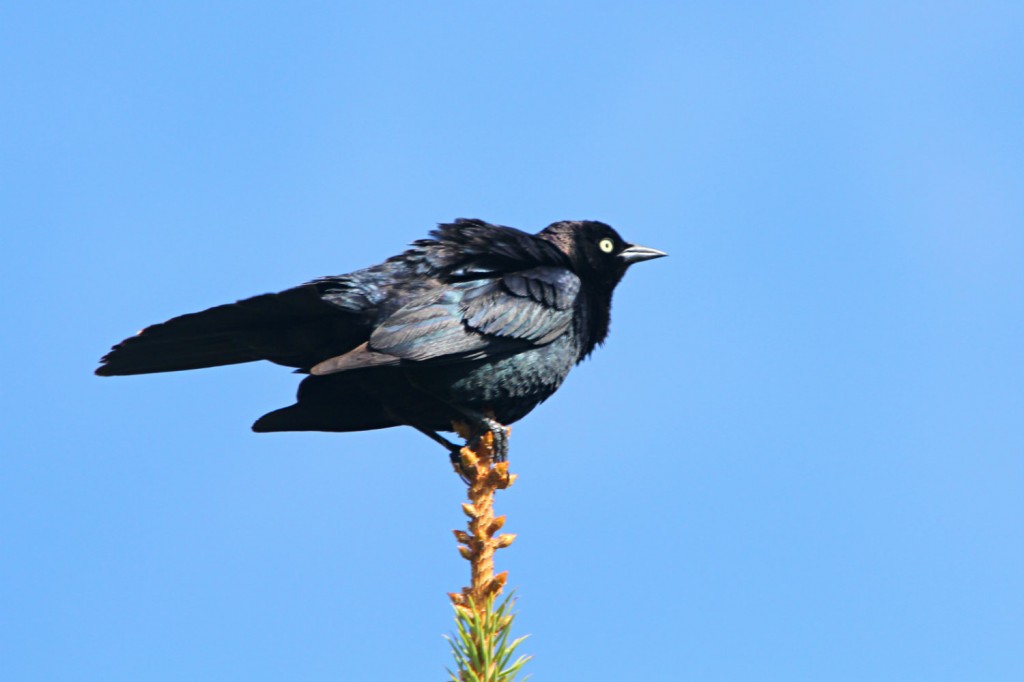
While I did have some surprising misses, I also found some good species, including the Brewer’s Blackbird above.
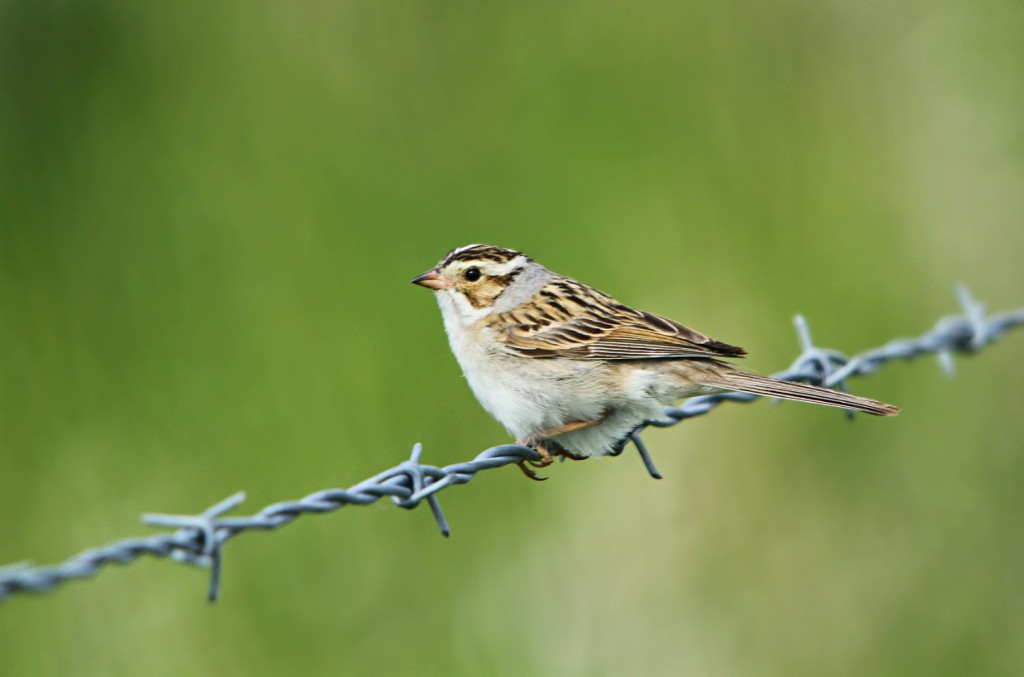
Although some of the common species such as Osprey were absent, most, including the Clay-colored Sparrow above and the American Goldfinch below were relatively easy to find.
Then there were some species that I missed last year but were easy to find this year. I could not find any LeConte’s Sparrows last year but this year I managed to find nearly a dozen. This little guy posed nicely for a few minutes near the Ranch.
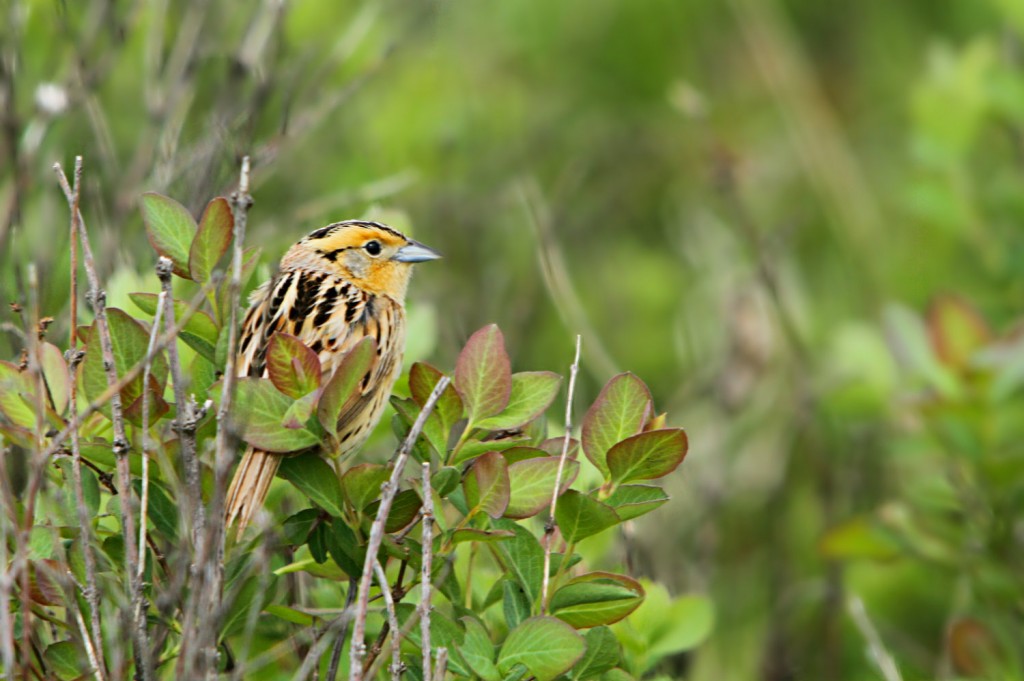
Perhaps I forgot to mention too that it was an early start? I was at the park just before 5, when the songsters were just getting started.
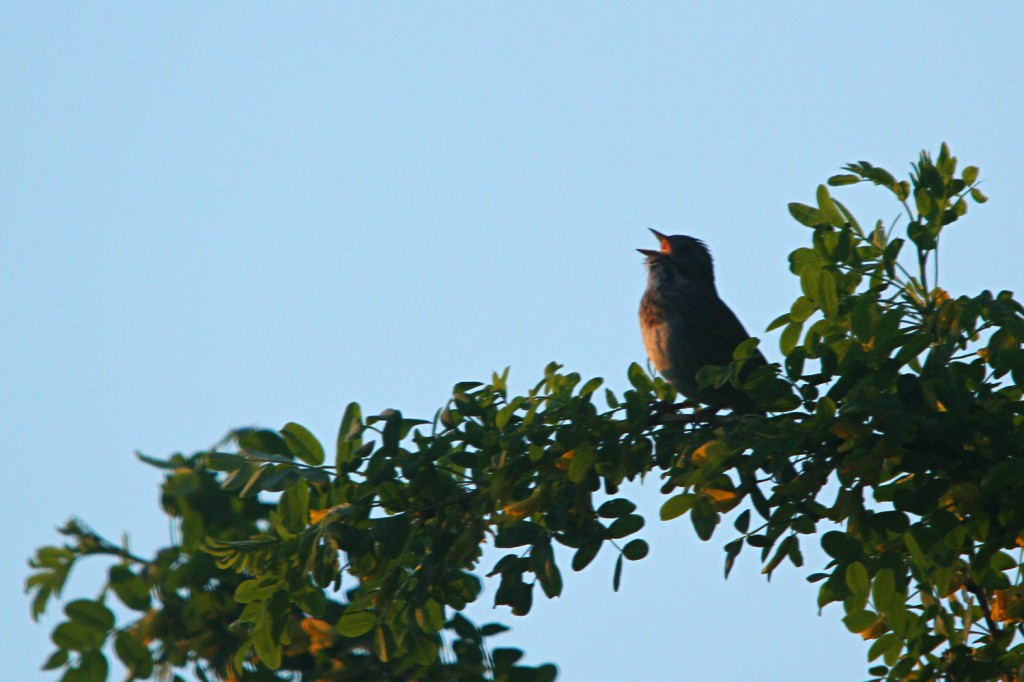
Lincoln’s Sparrow
One of the many birds to be singing early on was the Red-eyed Vireo. These little birds sing nice and loud but can be very tricky to spot. Luckily for me, this one Red-eyed Vireo below sang right from the top of a poplar. So although he was easy to see, he was still a long way up!
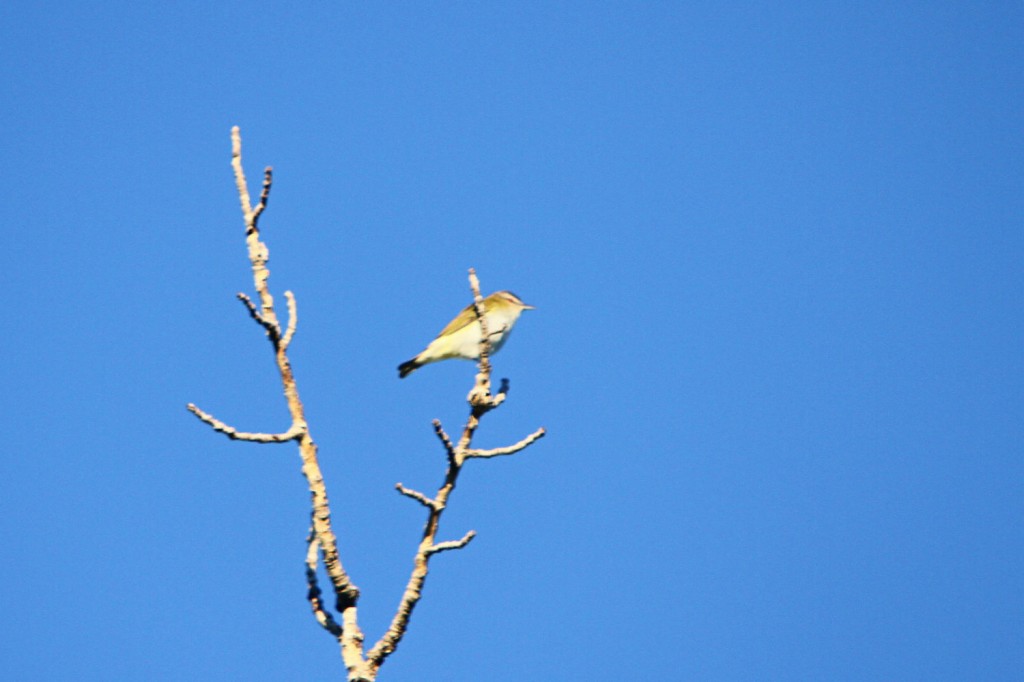
It was a good day and I’m looking forward to doing it again next year. I guess then it will have become the 3rd Annual Fish Creek Big Day…
More surprises and new discoveries in the Weaselhead
While it has only been two weeks since our last visit to the Weaselhead, and only a week since my last post on it, that amount of time can lead to a huge difference in the birds one will see and hear in such a dynamic habitat. In addition to some of the birds we only heard on our last visit, a bunch of new arrivals made for an eventful day. I was thankful for that, because by the time I started with our group at 7:30, I’d already been out in the Weaselhead for almost 4 hours with the Dawn Chorus, listening for birds in the pre-dawn light, and had already accumulated a list of close to 60 species for the day!
A small contingent of six of us decided to visit the Weaselhead again, and while we didn’t expect too much in the way of new birds, we were very pleased with what we did find! One of our first new finds though was a pair of Least Chipmunks rummaging around in the freshly stocked feeders. This one actually sat inside while we watched him snacking on the sunflower seeds.
Looking out over the Elbow River towards the area where the Rufous Hummingbirds are, we spotted this little fellow much closer still, and snapped a few shots. When we confirmed the ID as a Ruby-throated Hummingbird, we edged closer and were able to get some very nice views and photos.
Down the hill we went, checking on the Rufous Hummingbirds, but not before finding a couple of the birds we’d heard well the past few weeks but hadn’t seen. Both the Cedar Waxwings and Gray Catbirds seemed much more comfortable sitting out in the open this week, and both allowed nice photo opportunities.
The old faithful pair of Eastern Phoebes under the wooden bridges in the Weaselhead were both present, but we got our first good looks at the male under the north bridge. After looking the wrong way for him for a few minutes, thought I’d look down over the edge, and sure enough, less than five feet away from me, there he was! Once he knew that I’d seen him though, he flew under the bridge and away from us to continue his hunting for the morning.
As we walked through the meadow where the Calliope Hummingbirds nest, we heard two separate Ruffed Grouses drumming, and as we neared our usual Boreal Chickadee grove, this male was drumming so close to us that I could actually hear the wind whistling through his flight feathers.
Onward and westward we went, staying away from the main pathway as much as possible, as apparently there was a race going on along the main central path… though we didn’t see or hear much in the way of runners. As we neared the pathway though, we did hear this Yellow-bellied Sapsucker calling and tapping on this dead snag… at least when he wasn’t preening himself.
A visit to the south ponds netted the calls of a Sora, a few American Wigeon on the ponds, more Least Flycatchers than one could count, and at least two Rose-breasted Grosbeaks calling from the treetops. This male allowed us a few minutes of viewing before flying off once again.
One notably absent species were the Cliff Swallows. Their nests were empty, and we weren’t the only ones who noticed. This Merlin was sitting near the bridge staring intently down at the nest colony, in hopes of snagging some lunch. He sat there until long after we left, waiting for his lunch “on the wing” to be delivered.
Our last new species of the day was actually one that is generally more evasive than the most secretive birds, but for some reason, this young Thirteen-lined Ground Squirrel was sitting on the ground nibbling away on grass and seeds when we nearly stumbled over it. We could have sat there all morning taking hundreds of photos of it, but this little ground squirrel was completely fearless!
Next week I’ll be away, but I will share some highlights from the May Species Count with you, along with some really great sightings we had at the annual Livingstone Ranch Golf Course bird count! Have a good week, and good birding!
Birding Bowmont Park, rain or shine!
This last Sunday’s walk was once again plagued with the Sunday Morning Curse. While it wasn’t cold or windy, it was interspersed with rain throughout the morning, and during the last twenty minutes or so of our walk the skies opened up and drenched us. Oh yeah, and I didn’t have a rain coat with me either… At least I did manage a few decent pictures of some great new birds of the season for our group!
Early on, we were surprised by this little Orange-crowned Warbler in the budding poplar trees. It was one of the few warblers we saw (or heard) all day that wasn’t a Yellow Warbler!
As we passed one of the small ponds north of the pathway, we spotted a family of Mallards swimming around the edge of the pond, and a little further along found a Bank Swallow nesting colony. These swallows whipped about overhead, snatching insects from the air expertly, then whizzed back to their nest cavities to rest or to feed their mate.
We headed north into the wooded area, and found ourselves at a small pond, where we had good looks at a pair of Gray Catbirds, heard a few Song Sparrows, a lone Lincoln’s Sparrow, and had over a hundred swallows of various types swooping around overhead. We even had a few Northern Rough-winged Swallows feasting on the hatched insects over this pond.
Much to our surprise, we even heard a Common Yellowthroat calling, and while he had no qualms about calling, he certainly didn’t pose very long for any photos!
The star of the pond though were these little Mallard ducklings, peeping and quacking about the pond, but as soon as Mom and Dad landed on the pond, they made a bee-line for them!
After spending quite a bit of time with these little balls of fluff, we finally headed out of the woods and up the river valley slope. While the calls of the House Wrens were ever present, the first one we had good looks at was at the top of a spruce tree at the base of the slope. While it only stuck around for a few shots, the White-crowned Sparrows further up were much more photogenic.
And as we reached the top, the Gray Catbirds seemed to multiply, being seen all around us in every direction we looked. It wasn’t just the Gray Catbirds that popped into view either. American Goldfinches seemed to sprout from every branch like flowers. Take this little gent, for instance.
It was almost too soon, but as the rain began to come down harder, we nearly made a bee-line for the parking lot. We did, however, have time to spot this little Western Wood-Pewee zipping up from the banks of the river to snatch a mosquito or a midge before taking its place back down on the bank, over and over again until it had finally had its fill. They really are quite the adept little predators!
And with that, I’m all caught up and ready for another weekend of new birds as we head back to the Weaselhead in search of more of our many and varied feathered friends. Until next week, good birding!
May Species Count in the Weaselhead
I don’t think I need to mention again how much I love the Weaselhead Natural Area in SW Calgary. This year provided great weather for our Sunday walk, and gave us a bevy of amazing and beautiful birds, with plenty of opportunities to get the very best shots.
As it was part of the May Species Count, our group usually visits the Weaselhead a few weeks ahead of the rest of the Friends of Fish Creek outings, and Bob and I headed out even earlier in hopes of a few of the thrushes singing, and maybe some other early morning birds. We got our wish early on, with this Veery sitting out in the open just south of the first bridge, but sadly were shut out from hearing either the Swainson’s Thrush or Hermit Thrush which can often be found here.
After listening for the other thrushes, and taking our time getting back to the starting point to meet the others, we began our trip again, stopping at the top to listen for various other birds calling, and were lucky enough to see this lone Spotted Towhee singing from the top of a spruce tree just down the hill.
As we descended the hill for the second time, we spotted a few good birds on the way down, plus a bonus mammal, the Least Chipmunk, feeding at the bird feeders mid-way down the hill. At the bottom, we had some not so good views of White-throated Sparrows, but could hear their songs all throughout the morning.
As we reached the bridge, we had nearly three hundred Cliff Swallows flying overhead, and a few even came down to their nests, whether to rest or share food with their mates, I’ll never know. What I do know is that photographing swallows in general is one of the truest tests of a bird photographer. Thankfully, out of nearly fifty shots of the colony, I found one that turned out relatively ok!
We followed the pathway all the way to its end at the southern edge of the Weaselhead, and turned up good numbers of Yellow Warblers, and some of the first Least Flycatchers of the year, which could be heard all through the park with their distinctive “chi-bec” calls. Thankfully they’re also one of the easiest to identify by sight as well as sound, with their distinct thick eye-ring and buffy sides.
Down at the very south end, we heard the calls of a Northern Waterthrush, more Yellow Warblers than we could ever want for, and even a pair of elusive Sora. Hopefully the next time we see them they’ll be more cooperative for the camera!
We began the long trip back through the central portion of the Weaselhead, hearing our first Rose-breasted Grosbeak of the year, along with Red-breasted Nuthatches, Boreal Chickadees, and White-winged Crossbills, but the main reason for revisiting the central meadow was for the Calliope Hummingbirds who are annual residents here, and this year this male put on quite a show for us.
Once we’d had our fill of watching this hummingbirds antics, we headed to the north side of the Elbow River in search of the other regular hummingbird species here, the Rufous Hummingbird. Once again, we were not disappointed as we found a single male high up in a spruce tree, and even were lucky enough to watch as he faced off with another male in a territorial dispute. Here is the champion flaring his gorget in victory.
As we were preparing to leave for the next few stops along our May Species Count route, we were given a low and slow flyby by a male dark morph Swainson’s Hawk that’s been resident here in the Weaselhead for a few years.
And that’s it for another week of birding for us. With last weekend’s May Species Count, and the weeks crazy schedule, I missed my regular post last week, so this week you get two (at least!) new posts from me. Watch for the next one on Thursday! Until then, good birding!
The Long Walk in Lafarge Meadows
Posted by Dan Arndt
One of the longest walks with the Friends of Fish Creek birding courses is the Sikome Lake to Lafarge Meadows trip. With a variety of ponds, wooded areas, river access, and open fields, the number of different biological niches that are filled along the route make it hard for me to skip or overlook any one area over another. This is one of the reasons that when I found out it was available for the May Species Count weekend last year, I jumped at the opportunity. Sure it’s a whole lot of walking, and there are some other areas that can be covered by driving, or still others that are smaller and can be completed in a couple of hours, but this week’s walk with the Friends of Fish Creek on Sunday was a great scouting trip, and was absolutely worthwhile.
Right off the bat there was activity. While we waited for the main gate to be opened for us, we heard our first House Wren and Clay-colored Sparrows for the year, along with at least three Ring-necked Pheasants and many, many Savannah Sparrows. Once we got to the south parking lot though, we the number of new species jumped again. First, a Cooper’s Hawk was waiting for us in the parking lot, a few Black Terns flew overhead, and hundreds of Cliff Swallows swirled about high up in the morning sky.
I had heard that the owlets at Sikome Lake had fledged last week, and when we came upon the two young, we could not have asked for a better scene. We were treated as well to our first good views of a Violet-Green Swallow, standing out distinctly from the many Tree Swallows who had taken up nests in the wooded grove.
When we finally tore ourselves away from the amazingly adorable owlets, we headed to the first set of ponds and were treated to even more new sights. First, an adult Killdeer performing its broken-wing display, leading us away from a very well hidden nest that no amount of searching would have found. Over the pond, a trio of Forster’s Terns called back and forth, one pair even displaying and finally mating. A female Belted Kingfisher looked on with disdain, hoping they wouldn’t scare off all the fish. As we headed back south, a few Spotted Sandpipers were courting as well, and while this pair wasn’t quite as much interested in exhibitionism, a few we found later on in the day didn’t seem to mind our intrusion one bit.
On the south side of the bridge were more delights. Our first Yellow Warblers were calling from the woods repeatedly, until their calls became the dominant noises surrounding us, but the distinct call of a low flying Swainson’s Hawk was definitely impossible to miss!
Our trip to the far south end didn’t turn up any new species, but did turn up better looks at some old ones, including Yellow-headed Blackbirds, Cinnamon Teal, and Red-necked Grebes, with no less than six pairs nesting on the pond this year. We headed back, deciding to call it a day after four hours of walking and birding, but even still we added two more clear sightings. First, this Clay-colored Sparrow singing on the fence on the south side of the bridge, and the clarion call of a Baltimore Oriole on the north side, just as we called it quits.
It was a great day to be birdwatching, despite the gray skies!
Next week we’re off to the Weaselhead for the May Species Count. This promises to be an amazing morning. See you then!
Bankside to Mallard Point – The migration has arrived.
Posted by Dan Arndt
It was an incredible morning. The sounds of Savannah Sparrows, Song Sparrows, European Starlings, American Robins filling the air, along with the smells of spring. While it wasn’t the sunniest day, that was a blessing in disguise, as it helped keep it cool and helped to keep the birds calling well into the morning.
Upon our official start at Bankside, the presence of Savannah Sparrows was made readily apparent. Their calls serenaded us all through the day, but down near the riverbank we also heard a few Song Sparrows, both of which posed readily for the camera.
As we came back from the river to begin our walk in earnest, this Yellow-bellied Sapsucker flew up from building a nest hole to the edge of a building and began drumming on the siding, making quite the racket, but certainly announcing his territory to every female around.
We followed the river, and had a few great sightings. A pair of Swainson’s Hawks on a nest, a Wood Duck on a gravel bar, a pair of Common Mergansers sitting up on a log with a perfect reflection in the still water, and many American Robins collecting nesting material and preparing to raise their young. We also were lucky enough to observe this Red-tailed Hawk dodging a pair of American Crows that were harassing it continuously.
A little further up the river we paused for a few minutes to watch some Northern Shovelers, and our first Gadwall and Green-winged Teal of the year. A pair of each found this little section of river just perfect to spend their Sunday morning.
Our best birds of the day though, by far, were this pair of American Kestrels. A trio of Black-billed Magpies and a lone, and seemingly out of place Blue Jay, spent a good twenty minutes harassing them, before we moved on to leave them in peace.
As we neared the end of our walk, we finally came close enough to get a good look at one of the many Ring-necked Pheasants we had heard all morning, crowing away and searching for a mate. This beautiful brave male walked along the opposite shore while we stayed quite still and took in the view.
Another good sighting was a small flock of Common Grackles along the near shore, and even in the poor light they were quite striking to look at in their fresh iridescent plumage.
As we headed to the vehicles to car-pool back to the Bankside parking lot to finish the day, a pair of Merlins in the back yard of a nearby house began calling, and apparently were being harassed by a few Tree Swallows, House Finches, and Black-capped Chickadees. I guess they didn’t want these two setting up their nest near their well-stocked feeders!
Along the road on our way back to the vehicles, in one of the stormwater ponds that has recently been set up in Fish Creek Park, we found an amazing Great Blue Heron, but also found another new species for the year, these Blue-winged Teal!
Next week we’re off to Lafarge Meadows, and I’m hoping that we get a bit better light, but either way, the real push of migration has begun, and we are guaranteed to have a great day, rain or shine!
Good birding, and see you next week!











